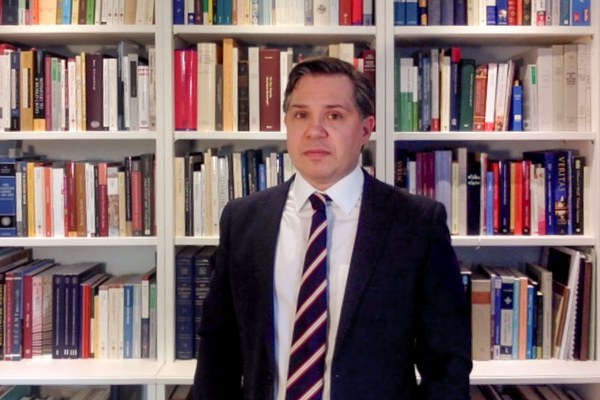Emilio Bonfiglio, first recipient of the Calouste Gulbenkian Fellowship in Armenian History at the Department of History of Boğaziçi University, is a fellow in Byzantine Studies. His research report, “A Sociocultural History of Translations in Medieval Armenia,” explored Armenian translations and their contexts of production and transmission.
Q&A with Emilio Bonfiglio
What does translation studies mean in your project?
Translations have always been studied but not as an academic discipline itself—they had the pragmatic purpose of rendering texts into another language, and only in recent decades have we started looking at them in terms of process and understanding translations as part of history. I am interested in the sociocultural aspect of translation: what was behind the process rather than just the product of translations. There are many considerations to account for in studying translation culture, such as access to texts, as well as economic and cultural underpinnings like sponsorship, travel, and hospitality—all during a very turbulent period of Byzantine history.
I focus on Armenian studies, which until recently was seen as peripheral to other major areas of study like Byzantine studies, because Armenia was literally on the physical periphery of the empire. This, you can imagine, created a hierarchy of value of cultures, which, combined with the idea of translation as a byproduct, has often put Armenian translation studies in a corner. I’m trying to show that a culture that produced numerous translated texts—as medieval Armenia did—was actually as creative as another culture that produced original texts.
What do medieval translations reveal about the Armenian culture of translation?
There are two specific examples I can make to demonstrate different types of selection agency Armenian translators had. One is a translation of John Chrysostom’s Commentary on the Acts of the Apostles from the eleventh century, which exemplifies Armenians specifically requesting a text to be translated. Gregory II Vkayaser, patriarch of the Armenian Church in the late eleventh century, wanted this precise text, and he found it and translated it. In this case, Armenians had agency over the process of translation—they wanted something, they went and got it.
In contrast, we also have the much more complex and uncertain case of a text attributed to John Chrysostom, Discourse When He Was Going into Exile, a harsh invective against the empress Eudoxia. We have Armenian, Syriac, and Slavonic translations of a lost original Greek text, and there is no colophon associated with the Armenian translation, so we don’t know the circumstances of its production. The Syriac text was previously thought to be an enlargement of a known Greek text. But I have found the Armenian and Syriac are identical, so my initial explanation was that the Armenian and Syriac translations date to sometime between the fifth and ninth century, and in the ninth century, the Greek text was lost during the process of transliterating texts from the uncial script to the newly invented minuscule script—many texts that were not transliterated in this time were simply lost. But the Slavonic translations (one in Serbian and one in Old Russian) can be proven to date from the tenth century and are aligned with the Armenian and Syriac texts. It is unlikely the Slavonic translations were made from Syriac or Armenian, suggesting the original Greek was still accessible. When you put all the pieces of the puzzle together, the culture of translation outside Byzantium becomes very complex, and it raises questions of how texts were accessed for translation. This Chrysostom text—an invective against the empress no less—was clearly available enough that it could be accessed in Constantinople for centuries by many different cultures for translation, but the original Greek was lost.
What does your sociocultural approach to translation add to Armenian and Byzantine studies?
First, it is a fundamental reorientation of studying Armenian culture not from the outside looking in but centering the study in Armenia and seeing how Armenians interacted with what was around them. That means not only understanding the center-periphery relationship between Byzantium and Armenia but also studying Armenia in relation to surrounding areas including Georgia, Mesopotamia, and the Islamicate world. Another point is to emancipate Armenian studies from Byzantine studies and concentrate on the agency of the Armenians. Traditionally, Armenian translations were studied to rescue the oldest layers of lost Greek texts, not for the Armenian itself. That perspective is colonial, putting Byzantium at the center and the rest as peripheral, so I’m trying to break up that approach and study Armenians for who they were and what they produced.
There is nowhere else I thought I could do this kind of research because Dumbarton Oaks has been particularly welcoming of Armenian studies. Robert Thomson, one of the former directors of DO, was one of the most influential Armenologists of the twentieth century. While he was here, a very famous symposium, East of Byzantium: Syria and Armenia in the Formative Period, was organized, which put Armenia, Syria, and translations in the spotlight at the most famous Byzantine institution in North America.
May Wang is postgraduate writing and reporting fellow at Dumbarton Oaks. Photo by Richard Tong, postgraduate digital media fellow.

